A Gearhead's Guide to Ireland
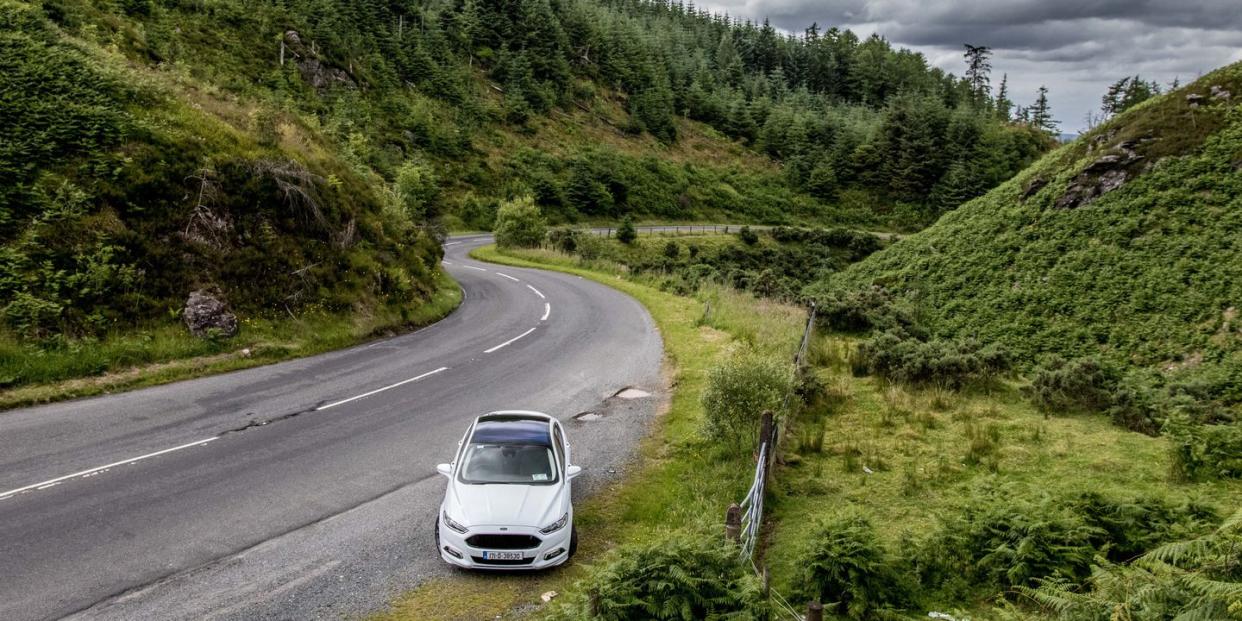
The reason British Racing Green exists has nothing to do with Norman heraldry or oak leaves or the ivy-covered walls of some motorsports-obsessed Lord's stately mansion. When the English painted their cars shamrock green in 1903, they did so because racing was illegal in England, but perfectly acceptable in Ireland.
Properly, it should be Irish Racing Green, as the wee island nation loves speed as much as they love–to choose an example at random–potatoes. When 79-year-old Rosemary Smith took the wheel of Renault's 800hp Formula One car, the world was shocked at how well she handled it. Irish people weren't. Sure, she was a Dublin lass.
Thus, I arrived in the morning in Bangor on the east coast of Northern Ireland, aiming to take a quick circuit around the island. Fittingly, our chariot is both a Ford and a diesel; everybody drives diesels around here, and Ford has a hundred year history in Ireland. It's a Mondeo ST-line, perhaps what Father Ted would drive if he was feeling a bit sporty.
Bangor had to be the start of this trip, as it's where Paddy Hopkirk had so much success behind the wheel of little British cars. First winning the Hewison trophy in 1954, he would go on to win the Circuit of Ireland in a Triumph TR3, and then a Sunbeam Rapier. Then, in 1962, he joined BMC's factory rally team and someone put him behind the wheel of an Austin Mini.
Paddy Hopkirk and the Mini Cooper
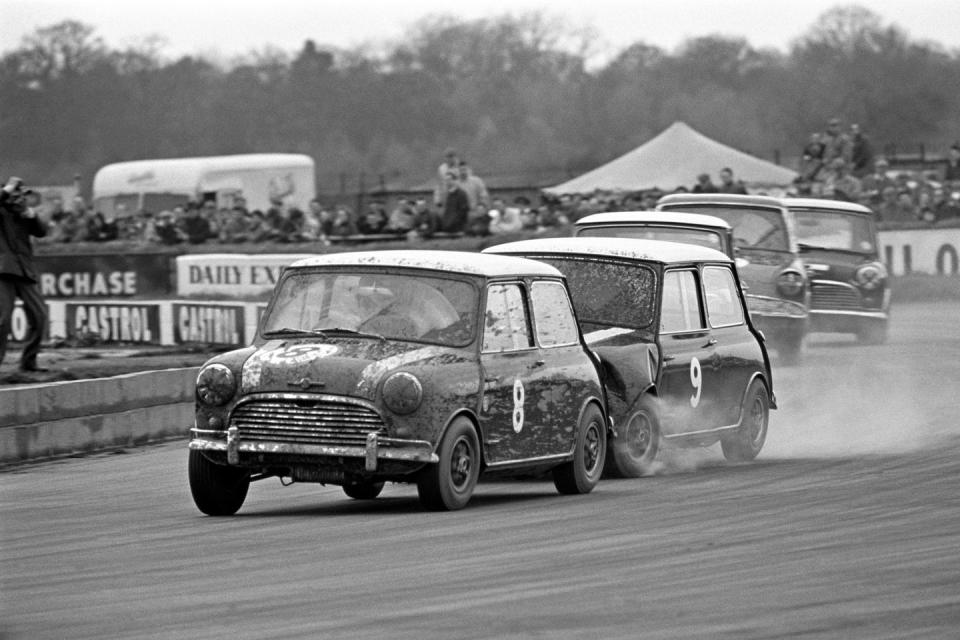
Patrick Barron Hopkirk was born in Belfast. How best to describe people from Belfast? Well, take this as an example: the Guinness World Record for the loudest sound ever produced by a human voice is held by a Belfast primary school teacher yelling, “Quiet!” It's that sort of place.
Having doubtless received his share of clips 'round the ear, young Hopkirk started out messing around with little Austin Sevens, and had soon won his first rally in a Volkswagen. When he took a seat in the Mini, it was a match made in heaven: a little car that thrives under a good flogging, and a terrier of a man from a race of people that live at full volume.
Hopkirk followed up his wins in Ireland and the UK by winning the 1964 Monte Carlo Rally. The victory made him an instant sensation, and put the Mini on the map as a legitimate sporting machine.
Once you get off Ireland's motorways and onto its many country lanes, you can see where Hopkirk got his talent. Everything's hedgerows, blind corners, and sudden crests. It's the ideal environment for a rally driver, and it's little wonder that Northern Ireland still produces great rally drivers like Kris Meeke.
From Bangor we head towards the small town of Dundrod, home of the Ulster GP motorcycle race. A circular road course that dips between the fields, it has a lengthy history that dates back before the bikes showed up. The day is fair and the Mondeo is willing: off for a lap.
The Dundrod Circuit
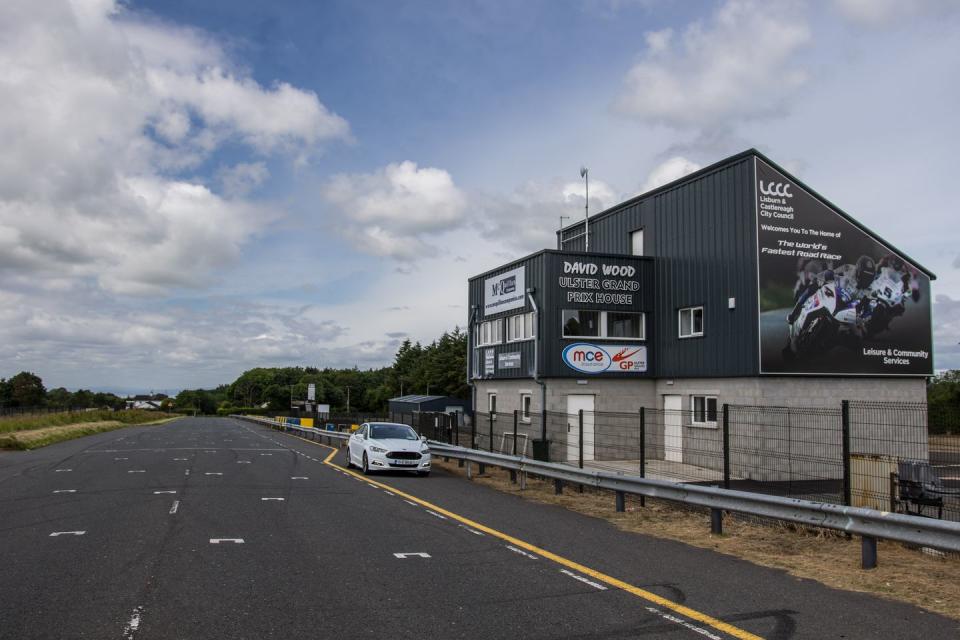
Home of the RAC Tourist Trophy between 1950 and 1955, the Dundrod circuit saw many legendary machines hammering around its relatively tight 7.4 mile length. The lap record for historic races was set by British F1 champion Mike Hawthorn at the wheel of a Jaguar D-type. He managed it in a brisk 4 minutes and 42 seconds, at an average of just under 95 mph.
The overall race record for the RAC Tourist Trophy is held by another legend who raced here: Stirling Moss at the wheel of his Mercedes-Benz 300 SLR. His average speed over seven hours was a little over 88mph. To give an example of how much faster the modern bikes are, rider Ian Hutchinson set an average speed of 134 mph on a BMW S1000RR over a flying lap at last year's Ulster Grand Prix.
The Mondeo doesn't set any records, but the pavement is smooth and winding, and relatively empty. The next stop is across towards the vacation spot of Port Rush, home to the North West motorcycle race. However, if we're going to talk about motorcycle racing and Norn Iron, we're going to have to make a wee stop first.
Joey Dunlop
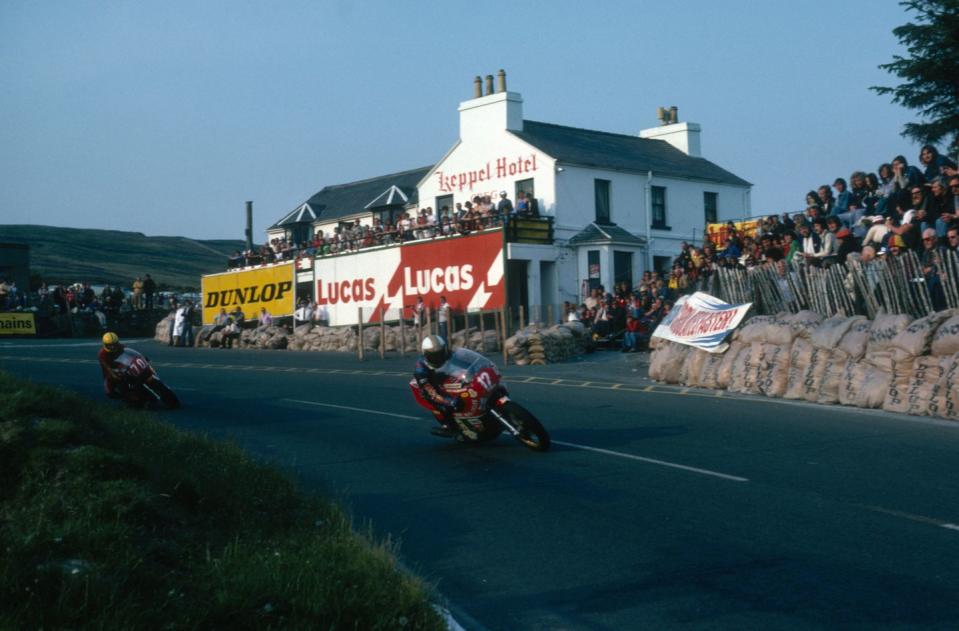
In the center of Ballymoney, a small market town in County Antrim, you'll find a memorial garden built to preserve the memories of two brothers. Joey and Robert Dunlop both lost their lives while racing motorcycles, but their accomplishments still echo down the ages.
Joey Dunlop in particular is a giant in Northern Ireland. Having won more than twenty-six races at the Isle of Man TT, including three hat-tricks in 1985, 1988, and 2000, he is rightly praised for being both utterly fearless, yet also humble.
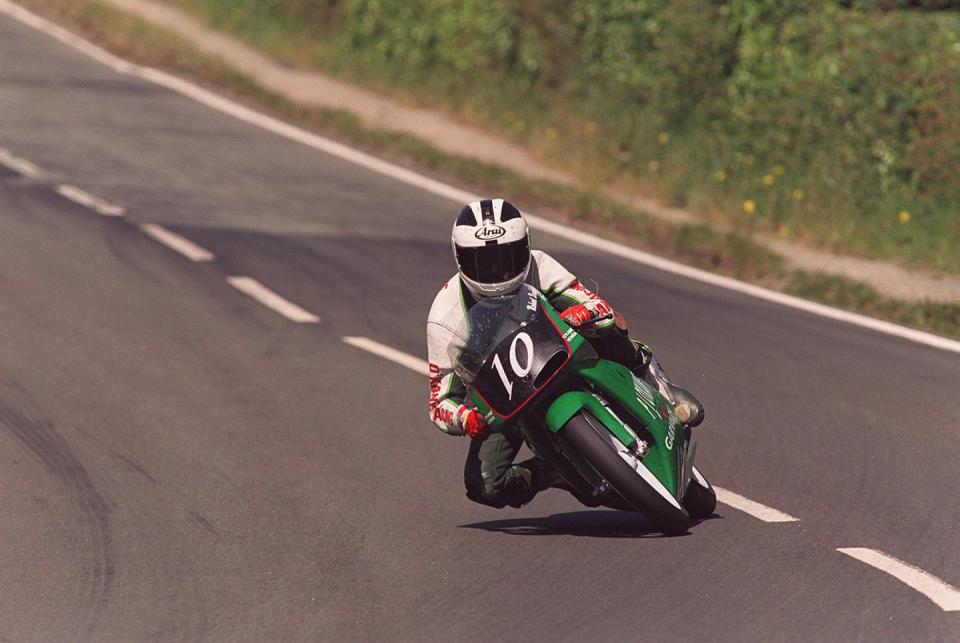
When he began racing in the 1970s, Ireland was in turmoil. The Troubles, as they are known, lasted decades and killed thousands. There are still echoes of sectarianism wherever you look.
However, Dunlop, with his yellow helmet and red t-shirt, was somehow apart from the madness. He stayed out of the politics of the era, and focused on finding an ever faster pace. Add in his considerable humanitarian work, and he was a figure the whole country could root for.
When he died in a crash in Estonia in 2000, some 50,000 mourners attended the funeral procession. There's a statue of him here, along with a lengthy list of his wins, and there's a twin to it overlooking the Bungalow Bend on the Isle of Man course.
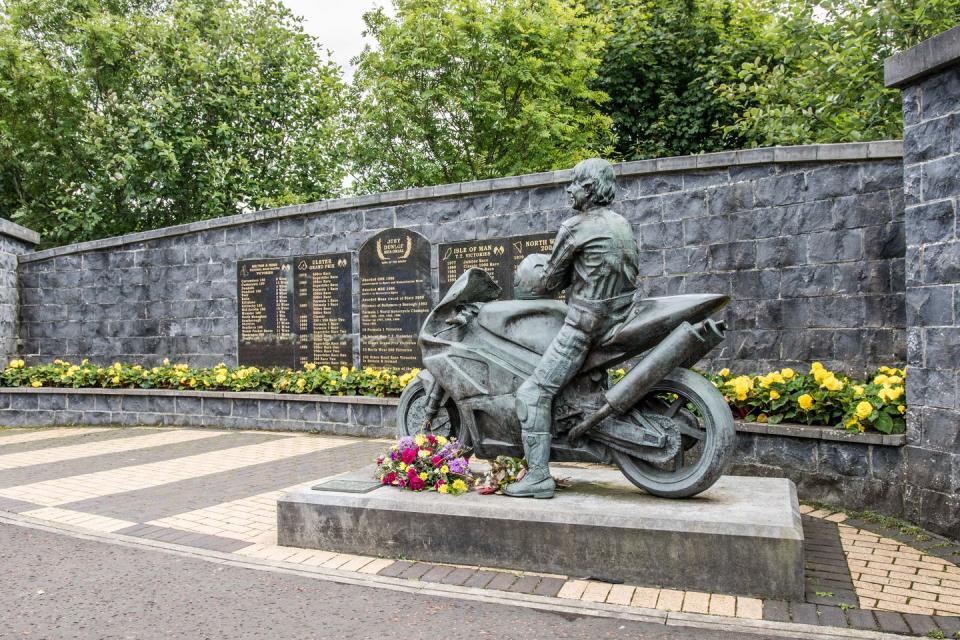
Pressing on northward, I soon arrive at the coast again, to the surprising view of a bunch of Irish people surfing. The water looks freezing. We're just a stone's throw from the basalt columns of the Giant's Causeway, and from the Bushmills distillery. It's fitting, because every year this place becomes a distillation of the relentless pursuit of speed.
The North West 200
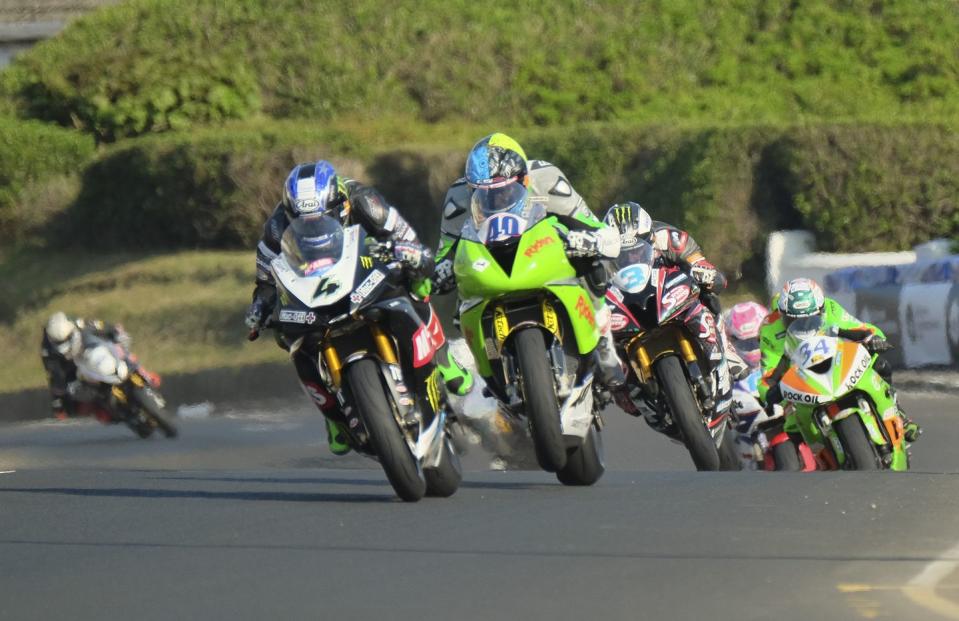
Held over a triangle of roads between Portrush, Portstewart, and Coleraine, the North West 200 is utter madness. If the Isle of Man TT has a rival, this is it: nine miles, multiple hairpins, average speeds of 120 mph, and top speeds above 200 mph.
Joey Dunlop won this race 13 times. He also lost two friends here, Frank Kennedy and Mervyn Robinson, two of the so-called Armoy Armada. It's a deadly place.
But it's not some morbid obsession that attracts the crowds, regularly in the 150,000 spectator range. Rather, this is motorsport as it was in the heroic age of Formula One, when the feats of skill seemed superhuman. That the riders can manage these bikes at such speeds is an incredible feat.
I leave the North via the scenic route, out and down through the Sperrin mountains. The driving roads in this part of the country are simply spectacular, and relatively free of traffic, compared to our next stop. However, I won't actually hit this evening's intended destination. On a narrow, fast-moving country lane, squeezing left to avoid a truck coming the other way, I nick a rock and burst a tire. On with the space-saver spare, but the time delay and the rubber doughnut cause a change in plans.
Moll's Gap
The thought was to meander down the west coast through Killarney, and hit the ring of Kerry early the following morning. The ring is probably the most tourist-infested part of the island, and I'd normally advise anyone interested in not getting stuck behind loaded buses to avoid it. Go to Donegal instead, even if you have to buy a sweater there.
But rally fans will want to hit up one of the most famous rally stages in Ireland, even if it means they have to get up at the crack of dawn to beat the crowds. Moll's Gap, named for the 19th century proprietress of a shebeen (an unlicensed pub), is situated between Killarney and Kenmare, and it's slithering perfection. You could make the argument that St. Patrick didn't drive all the snakes out of Ireland, he just turned some of them into tarmac.
The yearly Rally of the Lakes kicks off here, and the lengthy heritage of the road makes it sort of the Monaco of Ireland. Come in the off season, and bring something small and nippy.
Ford Factory in Cork
Something like a Fiesta. Henry Ford's father, William, was from Ballinascarthy in County Cork, and the family can trace its roots back here as far as the 16th century. If you visit the town, there's a sculpture of a Model T in the town square.
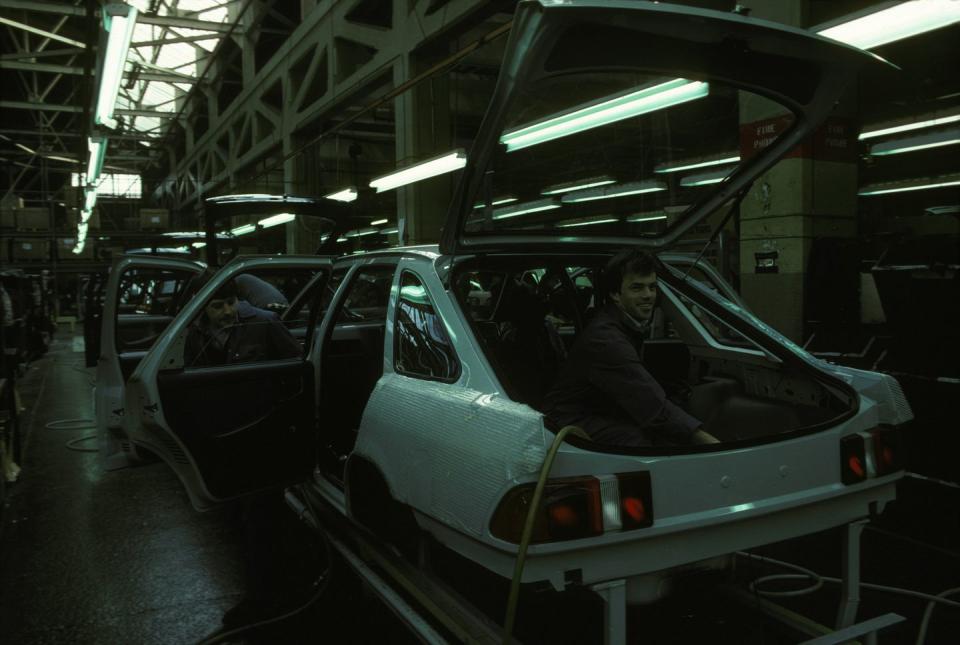
Cork is a lovely place, and well worth the visit just to hear the local accent, which has a rollercoaster lilt that even the rest of Ireland finds charming. Ford himself clearly fell in love with the place when he visited, and chose Cork to be the home of his first dedicated plant outside North America.
The Ford Factory in Cork started out producing Fordson tractors in 1917, and expanded into cars in 1921. Sprawling over 18 acres on the Cork marina, bits of the old facility can still be seen–the marina is currently undergoing a massive refurbishment project, which will see a park wrapped around a huge new stadium.
From here you can either meander over to the far coast, or simply hop on the quick-moving motorways in the direction of Dublin, and our last two stops.
Mondello Park
Ireland's sole proper international racing circuit, the Mondello Circuit has held FIA status since 2001, and was once part of the British Touring Car championship. Superbike racing is currently held here, as well as various GT and rallycross events.
There's a small museum on site, but the Mondello course also offers the chance to climb behind the wheel of a 911 or a single-seater racing machine, and take a couple laps of the track. If you're on your way back to the airport, with just a few days left on the itinerary, it beats fighting the crowds in some packed pub in the Temple Bar region.
Phoenix Park
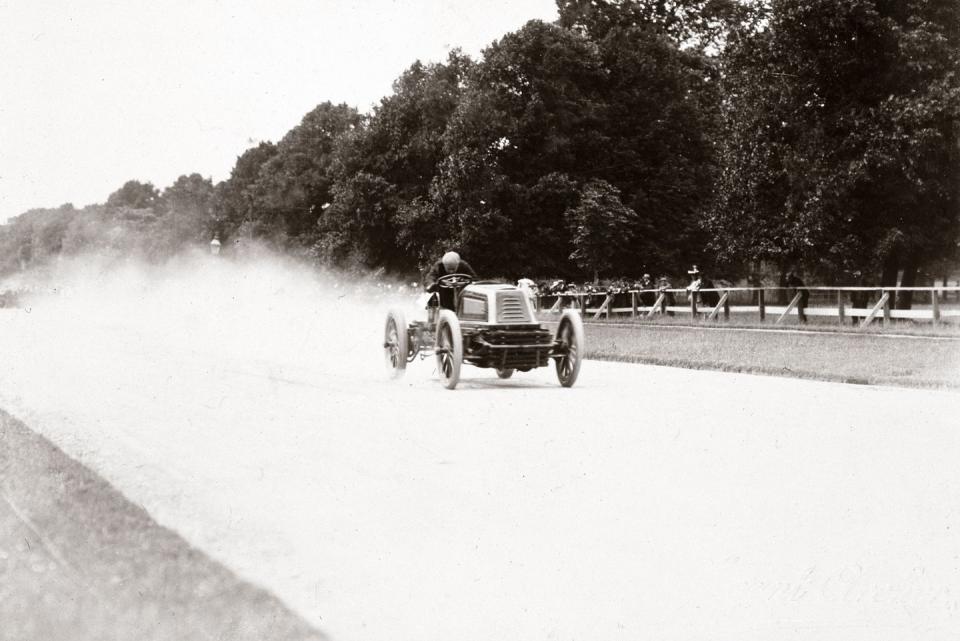
And last, we end our circuit in Dublin's Phoenix Park, one of the largest public spaces in Europe. It was here that the Racing Green first made its appearance, at the Gordon Bennett speed trials held in 1903.
The road course was somewhat hazardous. A single mile sprint, the cars would have to swerve around either side of the Phoenix statue in the middle of the road, mid-way to the finish line. Eventually, they moved the statue entirely.
A circuit was plotted out over the park's grounds in 1929, and used for the Irish International Grand Prix, won by an Alfa-Romeo 6C. The next year Rudolf Caracciola showed up in a Mercedes-backed team, and took the cup.
Through the 1970s, all manner of Formula Ford and Formula Atlantic races were held over various different circuits drawn out over the park's roads. The place was notoriously bumpy, to the point that a verified top speed record wasn't ever achieved. A couple of F1 cars made the run down the Ashdown Gate arc at roughly 180 mph, but the drivers were bouncing around so much they couldn't read the speedometer.
The park shut its gates to racing in 2012, and that was an end to it. There's still plenty of local racing to be found, particularly rallying and rallycross events, but most motorsports events happen outside the city these days.
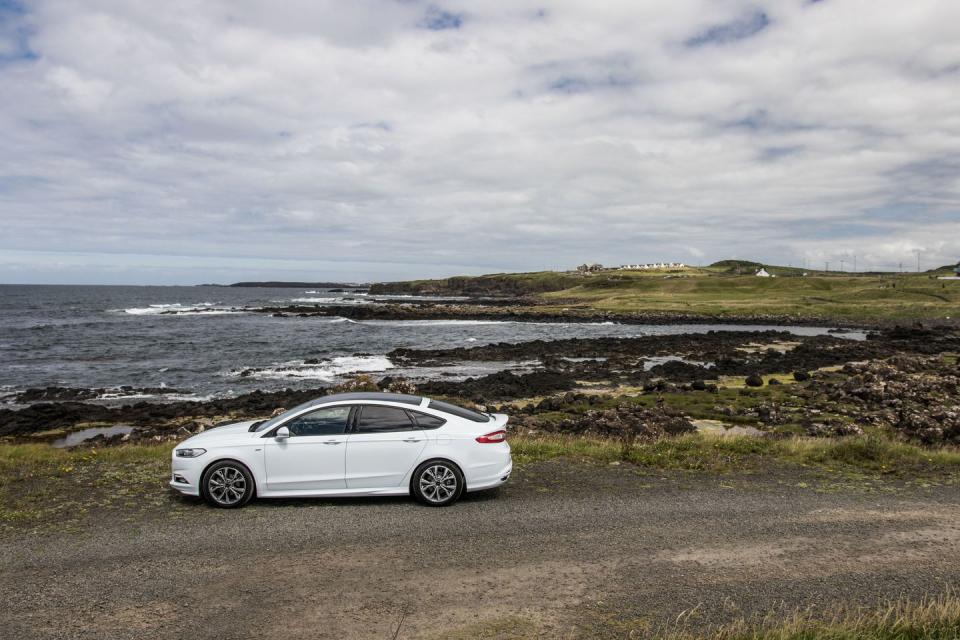
At least, there aren't many sanctioned motorsports events. As I limp my hobbled Mondeo back to the dealership among the cut and thrust of Dublin traffic, every driver seems involved in their own cheery Grand Prix. It seems fitting. After all, the national color is green, and green means Go.
You Might Also Like

